 A dust collection system can be a big money-saver when you consider the advantages of how it affects your bottom line. Operations that produce dust as a byproduct of their processes rely on an industrial dust collection system to:
A dust collection system can be a big money-saver when you consider the advantages of how it affects your bottom line. Operations that produce dust as a byproduct of their processes rely on an industrial dust collection system to:
- Provide clean air to the workplace
- Ensure the health and safety of employees
- Comply with NFPA (National Fire Protection Association) regulations
In doing so, it’s important that your dust collector is properly equipped and maintained — whether it’s installed inside or outside of your facility. Learn some helpful tips for operations and engineering personnel responsible for dust collector safety below.
5 Tips For Safe Dust Collector Operation
1. Equip Your Dust Collection System With Explosion Protection
Some dusts in a specific particle size and concentration with the right ignition source can be explosive. When these dusts are put in a pressure vessel (in this case, an industrial dust collector) and all three of those conditions are met, a dangerous situation can be created, in turn putting persons in harm’s way.
Generally speaking, there are two primary methods used to reduce the risk of injury. The first is to have a chemical explosion isolation and suppression system installed. The second is by use of explosion venting and passive explosion isolation.
When determining the right solution for an application, it must be first determined how explosive the dust is. To do that, an explosivity test can be done on the dust to be collected. This test will give the dust a Kst value and Pmax value. These values will tell how explosive the dust is. These dusts are divided into three St dust categories. St1 dusts range from 1-200 Kst, St2 dusts range from 201-300 Kst and St3 dusts are over 300.
Once the Kst value is established, an explosion vent supply company will need to determine what type explosion protection equipment is best suited. Fike or Boss Products are two examples of companies who can determine what explosion protection equipment is right for a specific application. Generally speaking, the type of dust, Kst value and location of the dust collector will be factored in when making this determination.
2. Protect the Ductwork
If you choose to go with a passive explosion venting and isolation system you will need to be mindful of the strength of your ductwork. When using an explosion venting and isolation system, the goal is to prevent the explosion from propagating down the duct and back to the work space where your employees are. Instead, you’ll want to vent the explosion to a safe location where we can be sure people are not.
The way to prevent the explosion from traveling down the duct and back into your building is with an explosion isolation valve. This valve must be installed in your ductwork, at a specific distance from your industrial dust collector. It is important that the duct between the explosion isolation valve and the dust collector be stout enough to withstand the explosion.
At A.C.T. Dust Collectors, we’re able to supply explosion isolation valves for any size dust collection system. The size of the valve is dependent on the size of your ductwork. They can be installed in existing ductwork systems, but — ideally — they’re included in the initial design.
3. Clean Dust Collector Filters Result in a Safer, Cleaner Environment
In order to maintain a clean and safe work environment, your dust collector should include a filter cleaning system. A reverse pulse (often called a pulse jet or reverse jet) filter cleaning system works via a simple action that has significant results. How do pulse clean systems work? Here is a simple explanation:
In most dust collectors, air flows from the outside of the filter media to the center of the filter. The dust is filtered out and left on the outside surface of the filter. To clean off this dust, a blast of compressed air is shot down the center of the filter and works outward, taking the dust off of the surface of the filter. In a down flow dust collector, such as an A.C.T. Dust Collectors’ system, the dust is captured by that downward airflow and eventually deposited in the collection bin. Keeping your filters clean will help to ensure that your design airflow will be maintained and your air quality will be at its best.
A few things to consider:
- A filter cleaning system doesn’t mean that your filters will never need to be changed, but it will significantly extend your filter life.
- Turning up the pressure of your compressed air doesn’t mean you will get a better pulse. Too much pressure can damage your filters and result in a smaller pulse curve.
- For best results, use dry compressed air.
4. Maintain Filters and Change Them Regularly
A simple, yet important, dust collection safety requirement is to change filters when airflow through the system reaches a differential pressure limit as prescribed by the manufacturer. Filters are key to the performance of a dust collection system, and it’s important to know the different methods used to clean filters and when they should be replaced. Using the wrong filter type can result in an inefficient dust collector.
Using the right filter matters, and the first step in determining which filter type you should be using comes down to the application you’re using it for.
View our OEM replacement filters here.
5. Create a Routine to Dispose of Dust You Have Collected
In baghouse and cartridge dust collectors, there will be a discharge for the collected dust. It can be via an airlock, screw conveyor or into a standard 55-gallon drum. Regardless of your discharge method, it’s vital to make sure it is emptied and cleared out on a regular basis so that the dust doesn’t build up in the hopper. Be sure to check with a waste handler to make sure all waste is properly disposed of.
You should be able to determine how often you need to empty the hoppers based on how much you run the system and what your application is.
Dust buildup in the hopper creates a potential fire or explosion risk. It may also affect the collector’s performance by clogging the system and preventing the pulse-cleaning system from doing its job.
Trust A.C.T. Dust Collectors to Keep Your Systems Operating Smoothly
A.C.T. Dust Collectors is an industrial dust collector manufacturer, helping manufacturing environments clear the air, improve employee efficiency, increase employee retention, create safe working environments and lessen equipment costs. Contact us today to find out more about dust collection safety and the importance of keeping your facility dust-free, or request a quote now.


























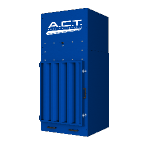
%20Collectors%20Image.png?width=143&height=143&name=ADC%20(Ambient)%20Collectors%20Image.png)
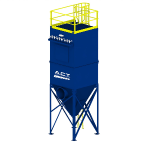

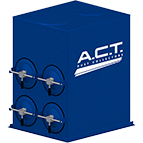
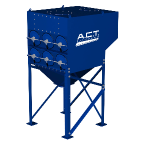
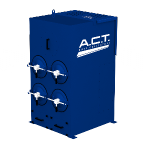


















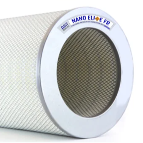


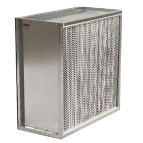

.png?width=240&height=91&name=ACT%20Dust%20Collectors%20Logo%20Solid%20White%202020%20(1).png)
.png?width=148&height=149&name=usa-manufactured-dust-collectors%20(1).png)